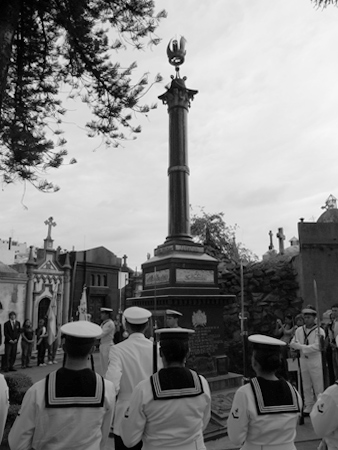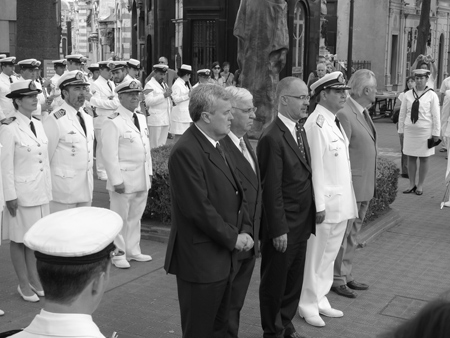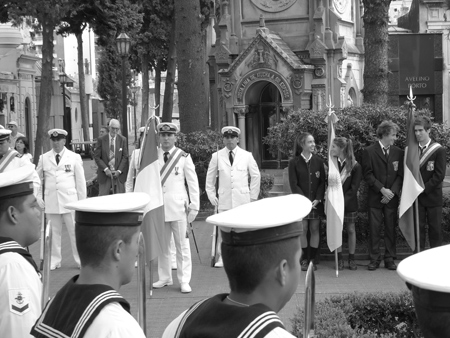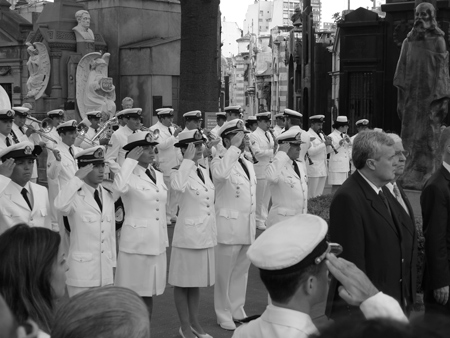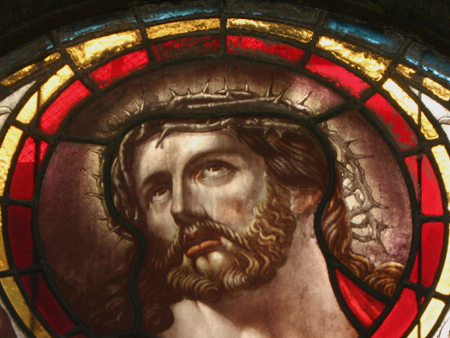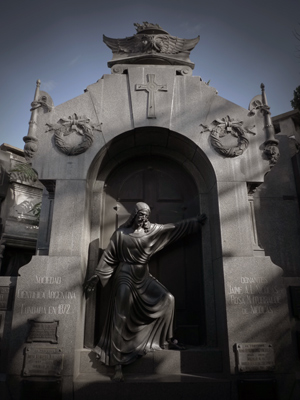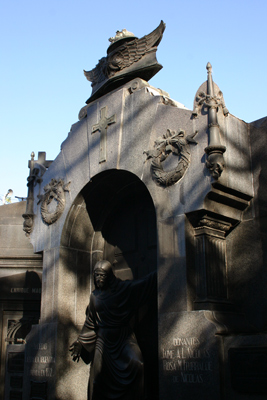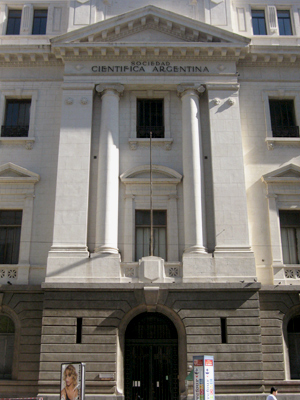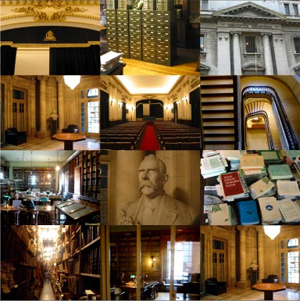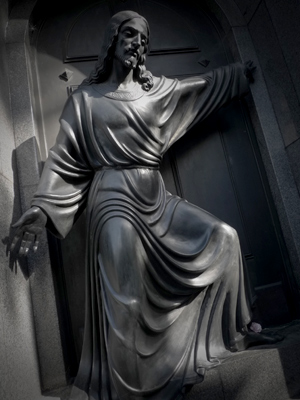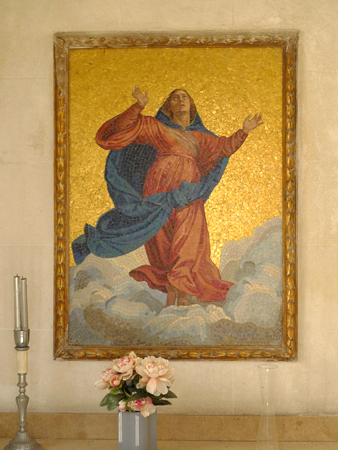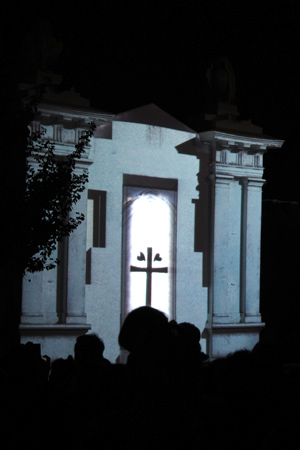
Typical for an election year, cultural offerings in Buenos Aires have increased over the past few weeks. Incumbent officials provide a few months of frenetic activity in an attempt to erase 3.5 years of neglect. Last night in conjunction with Earth Hour, the city sponsored “La Noche en Vela” (Candlelight Night) with different cultural activities across the city. Recoleta Cemetery participated with an announced video projection on the entrance gate beginning at 21:00. Ironically, entrance gate lights had been shut off to support Earth Hour but a multimedia show which undoubtedly used more electricity replaced them.
Although starting on time, someone had made a big PR mistake. Instead of projecting on the main gate, the show took place on a smaller service entrance. Much less engaging. In the beginning, various images of vaults displayed while an actor dressed as a caretaker paced back & forth ringing a bell. Eventually the caretaker character appeared in the video, opening the gate for spectators to look inside. More vault images raced by like a passing train while a women desperately tried to escape her inevitable death. As she laid to rest—accompanied by a cat—more still images were projected. Videos below are from various moments of the show:
Even though the tombs of Pedro Ferré & Luz María García Velloso were incorporated into the show, there was little attempt at historical narrative. The timing of the show seemed a bit off as well… certain parts went very fast while others seemed to last an eternity. Many of the crowd of approximately 500 people drifted in & out, commenting that they did not understand the purpose of the show. Perhaps an effort to incorporate information about the cemetery’s history would have been more appropriate than the overly dramatic skit. While mildly entertaining, Candlelight Night at Recoleta Cemetery could have been much better.
2 Comments